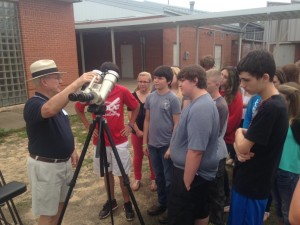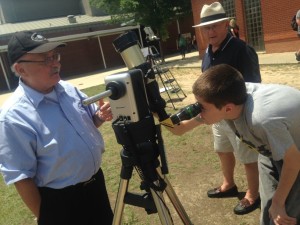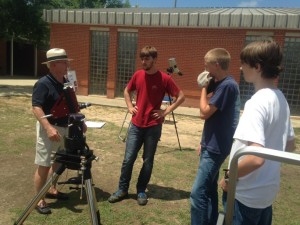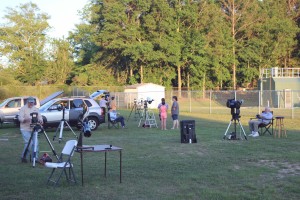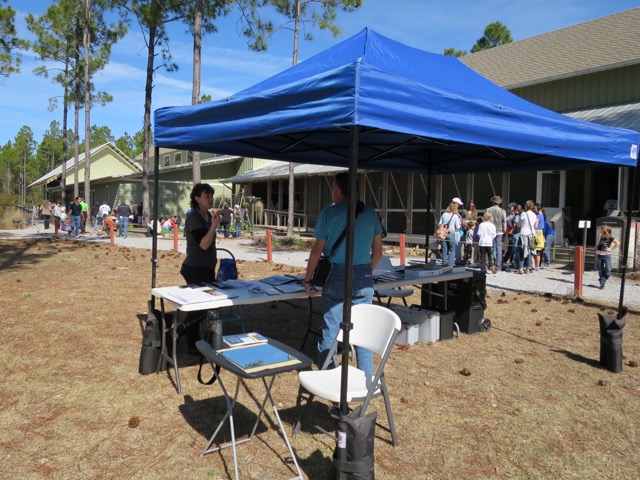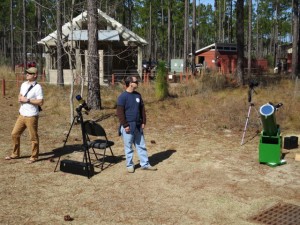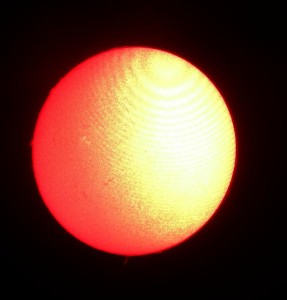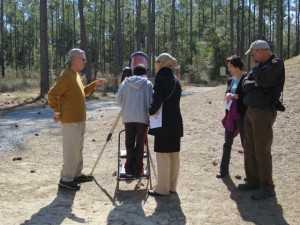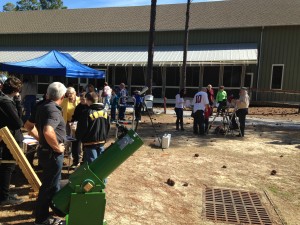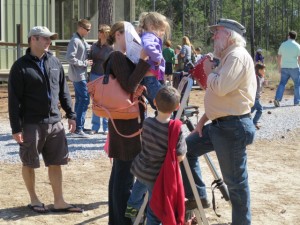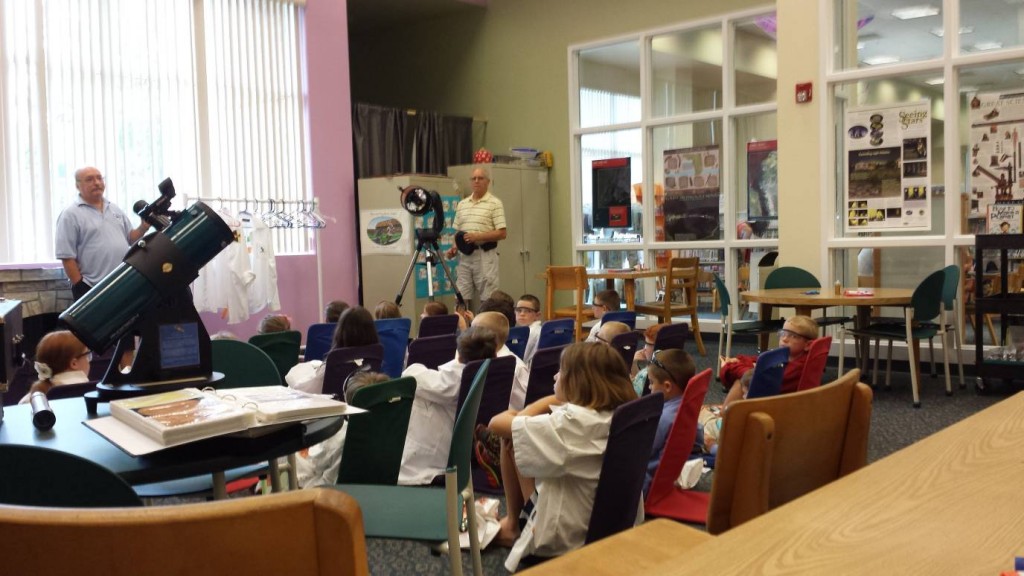The skies were perfectly clear as we headed north to Paxton, Florida to host a solar sky view for the 3rd and 8th grade students of Paxton School. The route up to the school quickly became fogged over and unbeknownst to us the fog camouflaged a thick low layer of clouds. It was still overcast during setup. Club members Frank Atchison, Tom Haugh, Dennis Hausch and Ken Leone made the trip this year.
The schedule was for Tom to give classroom presentations at the beginning of each class period and the students would then adjourn to the scopes after the presentation. The first and second classes were disappointed as the clouds were still holding on. Ken used the opportunity to give impromptu talks using his personal solar charts and photos.
However, by the third group, the skies were clearing and the rest of the classes were treated to views provided by Ken’s white light filtered binoculars, Dennis’ Coronado H-alpha scope and Tom’s spectroscope. There were a few small sunspots visible and Dennis was able to point out a small but dense prominence to the youngsters in line.
Luckily, students from the first two classes were able to stop by throughout the day and finally had a chance to see what was discussed during the classroom portion of their session.
We would like to thank Heather Stewart for the invitation to share our passion for Astronomy, and the staff and students of Paxton school for the warm welcome we received. Ms. Stewart also provided the event photography. We would especially like to thank those who bought us lunch.
